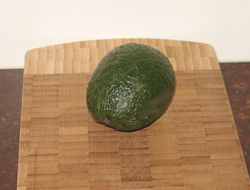Pantothenic Acid: Vitamin B5
Published: November 25, 2022
Pantothenic acid (vitamin B5) is also known as pantothenate.
This vitamin is formed from beta alanine (an amino acid) and pantoic acid (an alpha hydroxyl acid) and is a water soluble vitamin.
Pantothenic acid may not be as well-known as other B vitamins (thiamin, riboflavin, niacin, biotin, vitamin B6, vitamin B12, and folate).
However, pantothenic acid plays a major role in a multitude of essential metabolic reactions.
Functions
Pantothenic acid, along with cysteamine, is essential for the synthesis of coenzyme A.
Coenzyme A is essential for:
- Nutrient metabolism energy production
- Synthesis of lipids, neurotransmitters, steroid hormones and hemoglobin
- Acetylation of sugars and proteins within your body which may delay degradation
- Influences the activity, location and function of protein in cells
- Acetylation of DNA binding proteins
- Acetylation of choline to neurotransmitter acetylcholine
- Acetylation of amino sugars glucosamine to N-acetyl glucosamine and galactosamine to N-acetyl galactosamine: These amino sugars act within cells to direct proteins for membrane function.
CoA = Adenosine 3’, 5’ bisphosphate + Pantothenic Acid + Beta-mercaptoethylamine and is involved in over 100 different metabolic reactions.
CoA is a carrier for the following carboxylic acids: malonic, propionic, methylmalonic, and succinic.
These carboxylic acids are formed during various metabolic reactions. For example:
- Catabolism (break down) of several amino acids: methionine, threonine, valine and isoleucine
- Catabolism of odd-chain fatty acids (the carbon backbone of the fatty acid has an odd number of carbons)
- Ingestion of food (some fish contain propionic acid)
Follow the link to the full article to learn more about the essentiallity of pantothenic acid.
References
1.
Gropper, S.S., Smith, J.L. & Groff, J.L. (2005). Advanced Nutrition and Human Metabolism (4thEd.). Belmont, CA: Thomson Wadsworth.
2.
Whitney, E. & Rady Rolfes, S. (2005). Understanding Nutrition. Belmont, CA: Thomson Wadsworth

